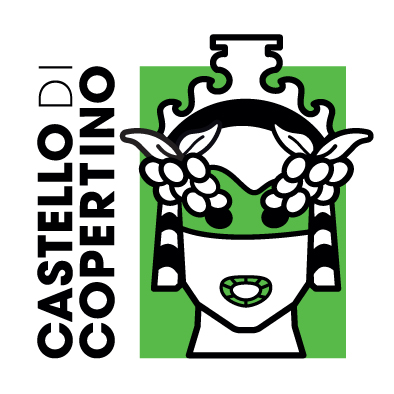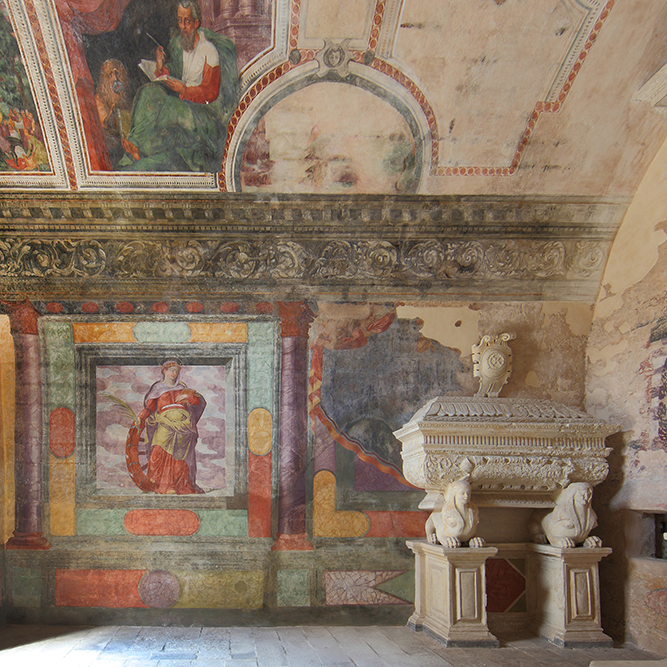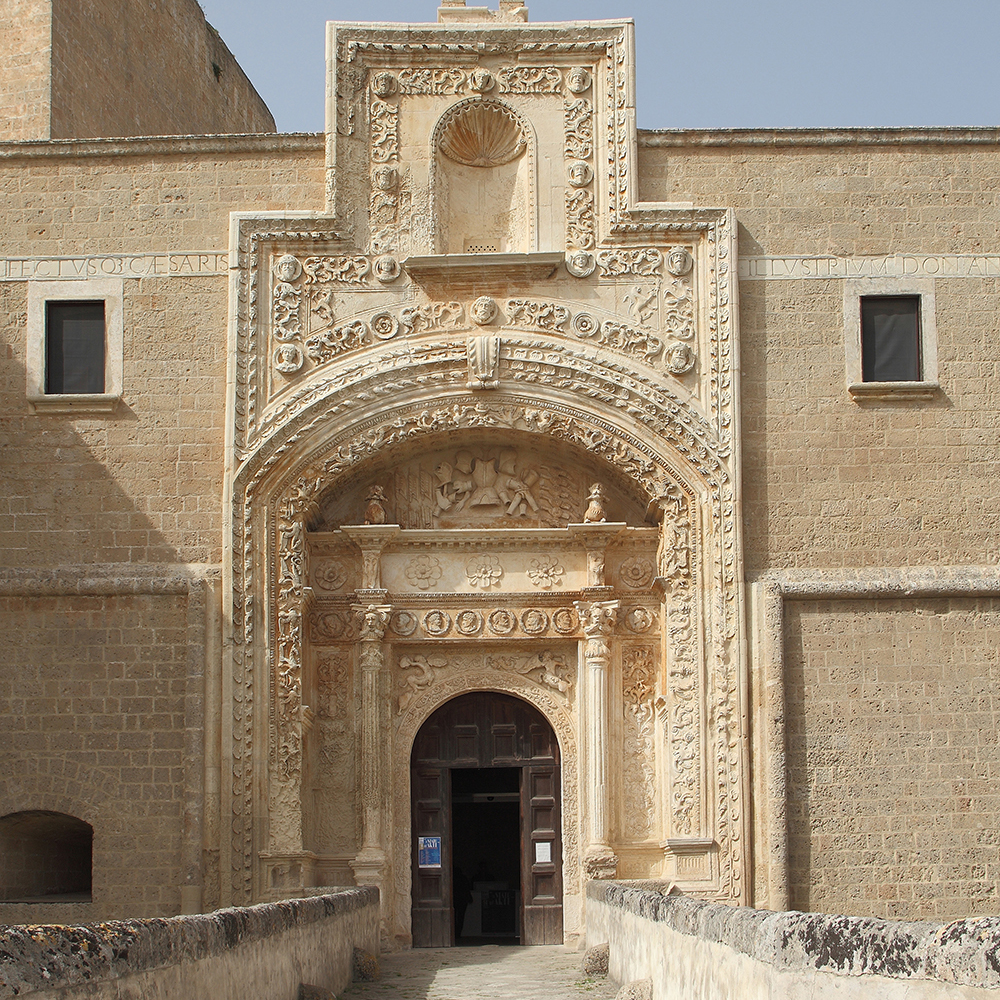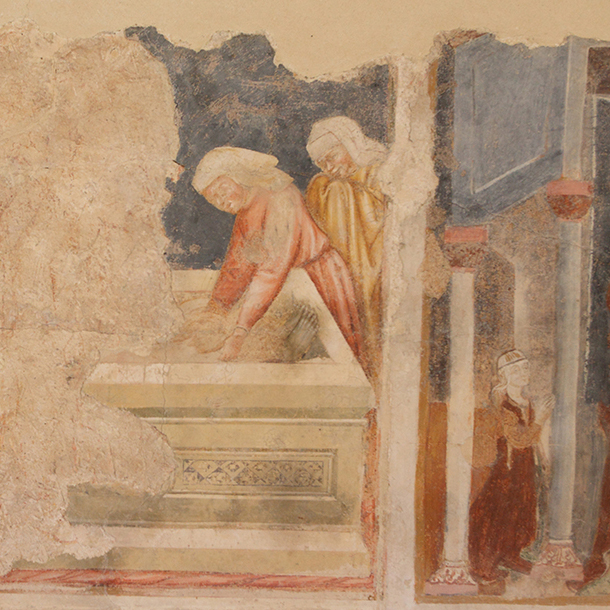Copertino Castle
 Copertino castle is a typical Renaissance fortress built around 1540 by incorporating previous structures; originally formed by an isolated tower (13th century), numerous structures were then added over the centuries to create a real castle.
Copertino castle is a typical Renaissance fortress built around 1540 by incorporating previous structures; originally formed by an isolated tower (13th century), numerous structures were then added over the centuries to create a real castle.
Background
The Renaissance castle was probably built around the design of Evangelista Menga, Apulian architect who was specialized in the fortifications throughout the kingdom of Naples all the way down to Malta.
With the shift of trade routes from the Mediterranean to the New World, the Apulian coasts become less and less the object of attacks by the Turks and the castle of Copertino also loses its defensive function, to the advantage of the residential one: by the end of the sixteenth century a majestic palace, once richly decorated, was built inside, and the new chapel of San Marco, frescoed by Gianserio Strafella in 1568 and commissioned by the new feudal lords, the Squarciafico family.
The date of construction of the castle is not ascertained. From the earliest known sources, a seventeenth-century manuscript, then given to the press two centuries later, indicates 1540, which would be reported in the inscription carved on the main façade. In reality, the date engraved there is 1500 (“MD”), and the gaps in the inscription do not support dispelling doubts.
The castle has many underground locations, some of which are not accessible. One of these is the prison cave where graffiti can be admired in the walls. The cave was walled up many years ago and known only for oral evidence and some rare photographs.
The largest underground environment, built in the sixteenth century occupying the space of the medieval moat, was destined for the county’s wine reserves, left to ferment in huge silos
capable of containing up to the equivalent of 700 thousand bottles. The great spaces of the castle were used as a production cellar until the 1950s.
Trivia
In 2015 a vineyard was planted on the walls of the castle, taking advantage of the land which also hosts almond trees, prickly pears and a pomegranate tree. Perhaps the function of “hanging garden” of the walls took over from the defensive one at the end of the sixteenth century, given that the completion of the crenellation has not been ascertained.
In 2019, while restoration work was underway, a spiral staircase was rediscovered in southwest rampart, which had been closed for many years. The roof of the staircase, a small helical vault, is one real architectural rarity and belongs to the model called vis de Saint-Gilles, widespread in few specimens from the Middle Ages and used as a test by the guilds of builders for the difficulty of its execution.
Info and Contacts
Piazza Castello, Copertino (LE)
Telephone: +39 0832-931612
Director: Pietro Copani
Mobile: +39 0832/931612
Email: drm-pug.castellodicopertino@cultura.gov.it
Contact us for more information
The fields marked with (*) in addition to the acceptance of our Privacy and Cookie Policy, are required to send the message.





